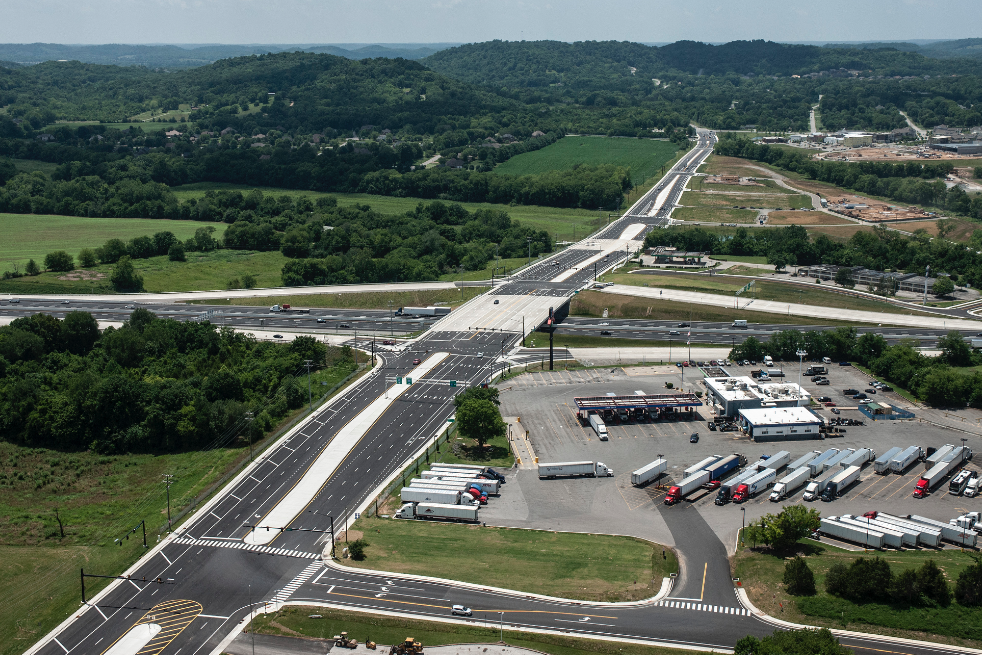How to Get Asphalt on Intrastate Freight Sections
BY Sandy Lender

When considering how highway projects are let, you may leave it to the state to decide whether the materials involved will be asphaltic or something else. You may let the state or national association influence how state materials engineers view one option over another, thus sit back and wait for the chance to do business—or not do business.
For today’s marketplace, the Fixing America’s Surface Transportation Act (FAST Act) has afforded the opportunity to do more than sit and wait when it comes to what materials we will get to provide for moving freight. According to the Federal Register, “The FAST Act included a provision that requires each State that receives funding under the National Highway Freight Program to develop a State Freight Plan that provides a comprehensive plan for the immediate and long-range planning activities and investments of the State with respect to freight and meets all the required plan contents listed in the Act.”
That sounds like a lot of planning.
Your state DOT officials will be interested in incorporating freight to a long-range transportation plan to facilitate basic commerce, of course, but also because without the mandatory planning, the department loses its eligibility to obligate NHFP funding (23 U.S.C. 167) after Dec. 4, 2017. To have access to a portion of the $1.2 billion per year (on average) of NHFP funding, your state DOT officials must plan ahead. Thus the Federal Register published guidance for the implementation of State Freight Plans (49 U.S.C. 70202) and the use of State Freight Advisory Committees (49 U.S.C. 70201).
Within that guidance, it reports: “State Freight Plans developed pursuant to the FAST Act are multimodal in scope…State Freight Plans are meant to be comprehensive, and as such, they should assist State planning that involves all relevant freight modes (highway, rail, maritime, air cargo, and pipeline, as appropriate to that State).” The 41,000+ miles that make up the Primary Highway Freight System plus the critical rural and urban freight corridors that states have identified are the concern for asphalt professionals. “Under 23 U.S.C. 167(i)(4), effective beginning 2 years after the date of the enactment of the FAST Act, each State that plans to obligate funds apportioned to the State under the NHFP must have developed a State Freight Plan in accordance with 49 U.S.C. 70202 (as it relates to highways), though the multimodal components of the Plan may be incomplete.”
Let’s do quick math. The FAST Act was passed Dec. 3, 2015, and enacted Dec. 4, 2015. That gives the asphalt industry, as of this issue’s mail-date, roughly 11 months to assist in the development of State Freight Plans across this country as those plans relate to highways.
Get Involved in Your State
The U.S. DOT wants professionals to join committees to get this done. “State Freight Plans that consider all the relevant transportation modes and performance measures (congestion reduction, safety, infrastructure condition, economic vitality, system reliability, and environmental sustainability) will be more informed and lead to better outcomes.”
Section IV of the guidance document encourages states to use a collaborative process that involves all of the relevant stakeholders affected by the freight transportation system. “To help accomplish this…DOT strongly encourages States to establish, continue, or expand membership in State Freight Advisory Committees. A forum of this type that is similar from State to State will also facilitate the ability of public and private stakeholders…”
The guidance lists a number of potential representatives from a cross-section of the public and private sectors of the freight industry such as:
- Ports
- Freight railroads
- Shippers
- Carriers (such as pipelines, airlines, barges, etc.)
- State DOT
- MPOs, tribal governments, regional councils, etc.
- Safety partners
- Hazmat transporters
- University transportation centers
- Environmental agencies
The suggested list for the state advisory committee is longer than this example. Let’s ensure the actual list in your state includes a representative from the state asphalt pavement association who can contribute guidance to enhance our nation’s commerce while contributing to the conversation as a whole.
The conversation overall has stipulated goals. According to the Federal Register, “The FAST Act directs that State Freight Advisory Committees shall: advise the State on freight-related priorities, issues, projects, and funding needs; serve as a forum for discussion of State transportation decisions affecting freight mobility; communicate and coordinate regional priorities with other organizations; promote the sharing of information between the private and public sectors on freight issues; and participate in the development of the State Freight Plan.”
If your state has opted to create a State Freight Advisory Committee, the state is required to consult with that committee to establish or update the State Freight Plan. It’s going to be important to have members of the asphalt industry involved in the conversations about improving roadways.
“In the case of roadways on which travel by heavy vehicles (including mining, agricultural, energy cargo or equipment, and timber vehicles) is projected to substantially deteriorate the condition of the roadways, a description of improvement that may be required to reduce or impede the deterioration…”
Most people reading this publication already know the benefits of an asphalt structure. By joining a State Freight Advisory Committee, or supporting a colleague who joins such a committee, you get to share your knowledge of structural and performance qualities of asphalt pavements with others. The committees that will be making plans for the freight system of the United States will be meeting soon, and the asphalt industry would be wise to grab the opportunity the FAST Act has afforded us by taking part in those conversations.
